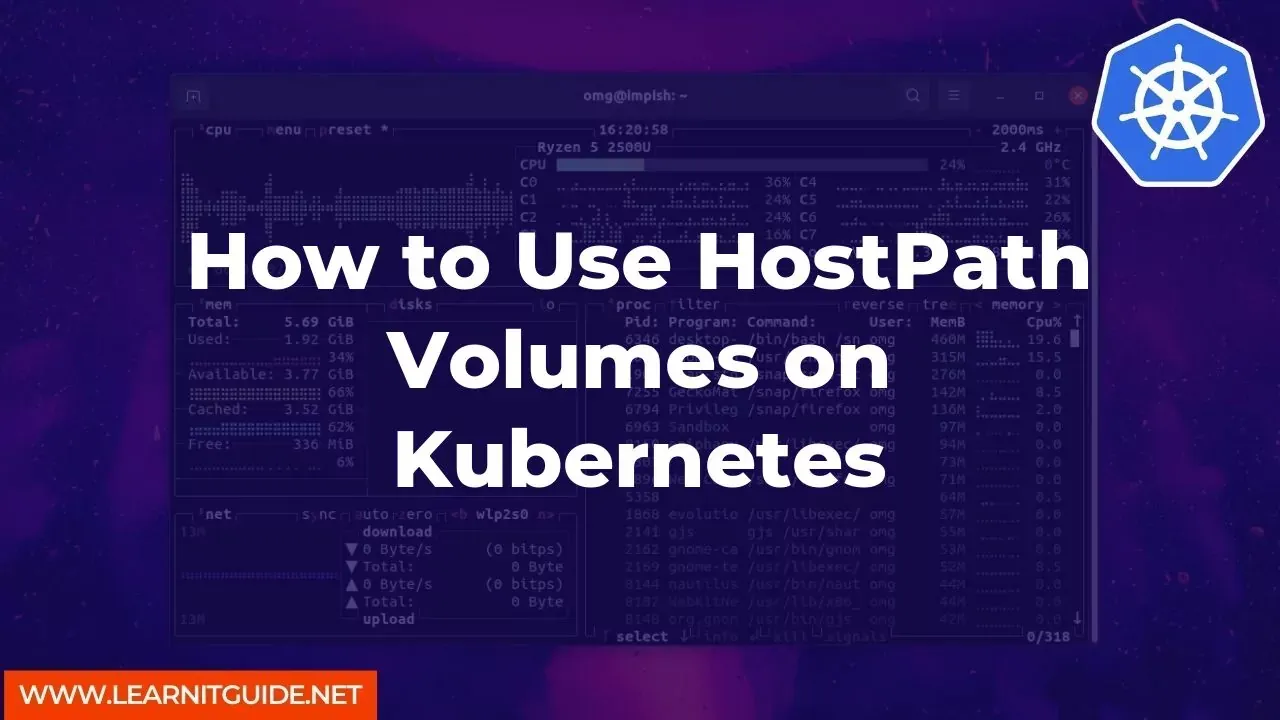Kubernetes is a powerful container orchestration tool that allows you to easily manage and deploy containerized applications at scale. One of the most important features of Kubernetes is its support for different types of volumes, which can be used to store data for your containers. One of these volume types is HostPath, which allows you to mount a directory from the host file system into your container.
In this article, we will explore how to use HostPath volumes in Kubernetes, including step-by-step instructions and examples.
Prerequisites:
- A running Kubernetes cluster
- Basic knowledge of Kubernetes concepts
Step 1: Creating a HostPath Volume
To create a HostPath volume, you need to define a PersistentVolume object in Kubernetes. This can be done using a YAML file. Here's an example:
apiVersion: v1
kind: PersistentVolume
metadata:
name: my-hostpath-volume
spec:
storageClassName: ""
capacity:
storage: 1Gi
accessModes:
- ReadWriteOnce
hostPath:
path: /data/my-hostpath-volume
In this example, we are creating a HostPath volume with a capacity of 1Gi and mounting it to the path /data/my-hostpath-volume on the host file system.
Step 2: Using the HostPath Volume in a Pod
Now that we have created a HostPath volume, we can use it in a Pod by defining a PersistentVolumeClaim object that references the volume. Here's an example YAML file:
apiVersion: v1
kind: PersistentVolumeClaim
metadata:
name: my-hostpath-claim
spec:
accessModes:
- ReadWriteOnce
resources:
requests:
storage: 1Gi
storageClassName: ""
selector:
matchLabels:
app: my-app
---
apiVersion: v1
kind: Pod
metadata:
name: my-pod
spec:
containers:
- name: my-container
image: my-image
volumeMounts:
- name: my-hostpath-volume
mountPath: /data
volumes:
- name: my-hostpath-volume
persistentVolumeClaim:
claimName: my-hostpath-claim
In this example, we are creating a PersistentVolumeClaim that requests 1Gi of storage from our HostPath volume. We then create a Pod with a container that mounts the volume at /data.
Step 3: Verifying the HostPath Volume
To verify that our HostPath volume is working correctly, we can create a file on the host file system and then verify that it is accessible from within the container.
First, let's create a file on the host file system:
$ echo "Hello, world!" > /data/my-hostpath-volume/test.txt
Next, let's verify that we can access this file from within the container:
$ kubectl exec my-pod -- cat /data/test.txt
Hello, world!
Congratulations, you have successfully used a HostPath volume in Kubernetes!
More Examples:
- You can use a HostPath volume to share configuration files between containers running on the same node.
- You can use a HostPath volume to persist data for a stateful application running in a single container.
In this article, we have explored how to use HostPath volumes in Kubernetes. HostPath volumes provide a simple and flexible way to mount a directory from the host file system into your containers. By following the steps outlined in this article, you should now be able to use HostPath volumes in your own Kubernetes deployments.
Related Searches and Questions asked:
That's it for this post. Keep practicing and have fun. Leave your comments if any.








0 Comments